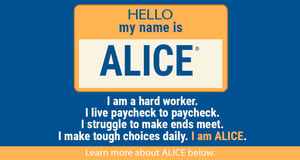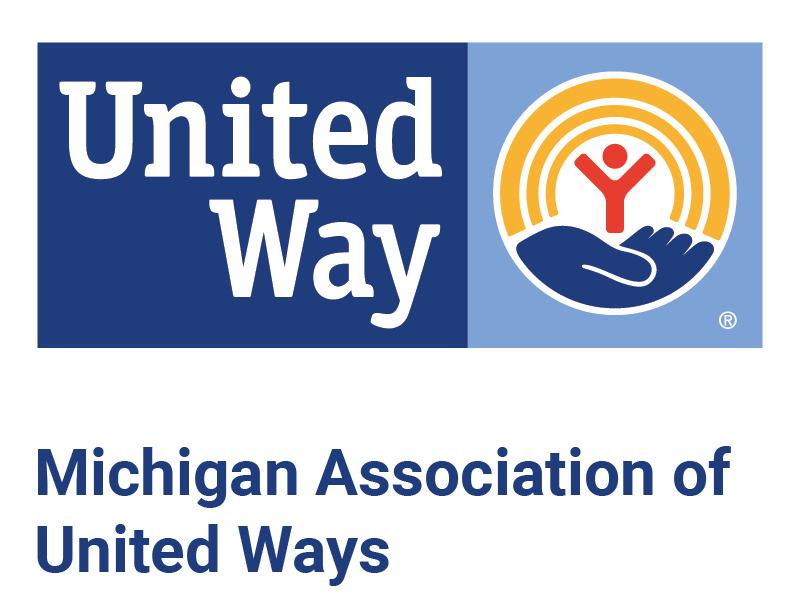
Jeffrey Mosher catches up again with Mike Larson, President & CEO, Michigan Association of United Ways, based out of Battle Creek, MI, but serving statewide.
They discuss the 2021 ALICE Report for Michigan that shows progress still needed to help working people.
Hear Mike discuss the latest ALICE report with Jeffrey with the podcast shared below
From the interview above, these questions were covered;
Can you tell us about the main findings from the 2021 ALICE Report?
What is the ALICE threshold and how is it different than the Federal Poverty Level?
What can you tell us about the 10% on the cusp of the ALICE threshold?
The 2021 ALICE Report is representative of 2019 numbers. How do you think the reports will be impacted following the COVID-19 pandemic?
What public policy work can be done to lower the percentage of Michiganders living at or below the ALICE threshold?
The Michigan Association of United Ways also shared the following release for additional information on the topic.
Latest report includes enhanced methodology, adds Senior Survival Budget and ALICE Essentials Index
LANSING, Mich. - The Michigan Association of United Ways (MAUW) released its latest study on the condition of Michigan’s working families, also known as ALICE households—Asset Limited, Income Constrained, Employed. The 2021 ALICE Report found 38% of households still struggled to make ends meet in 2019, prior to the onset of the coronavirus pandemic.
The number remained relatively unchanged from the 39% of households identified in the previous report, and significantly up from pre-recession levels—32% in 2007 (note: both data points have been updated using the 2021 report’s enhanced methodology). Of Michigan’s 3,963,558 households, 504,237 (13%) earned below the Federal Poverty Level in 2019, and another 1,004,047 (25%) were under the ALICE threshold. According to a data point new to this year’s report, an additional 10% of households in Michigan were on the cusp of the ALICE threshold in 2019, with 236,620 households just one income bracket away.
“By showing how many Michigan households were struggling in 2019, the 2021 ALICE Report provides the backstory for why the COVID-19 crisis is having such a devastating economic impact,” said Mike Larson, CEO, Michigan Association of United Ways. “This data shows the ALICE population was completely unprepared to weather a storm like the one we have faced the past year, and those we have relied on the most—essential workers—were often receiving the least.”
According to the report, 70% of infrastructure jobs in Michigan paid less than $20 an hour in 2019, and 63% of nurturers—those in health care, education and care giving—made less than $20 an hour. The report also found households who are Hispanic, Black, and single, female-headed with children are more likely to fall under the ALICE threshold by significant margins.
“Every day and especially in times of crisis, we rely on countless essential workers to keep us going,” said Michigan Governor Gretchen Whitmer. “These frontline heroes show up day after day allowing the rest of us to stay home and stay safe, but as this year’s 2021 Michigan ALICE Report shows, many of them are in need of our support. We must serve all Michiganders in need, especially those who keep us all going, with initiatives that invest in their health, education, and financial security. I am proud of the programs I have proposed to uplift working families like Futures for Frontliners and Michigan Reconnect and my administration’s historic investments in expanding access to childcare assistance.”
The report includes enhanced methodology, including new sources for more household specific data, to adjust to the reality of changing needs. The ALICE Essentials Index is a newly included measure of the change over time in the costs of essential household goods and services. It can be used as a companion to the Bureau of Labor Statistics’ Consumer Price Index (CPI), which covers all goods and services that families at all income levels purchase regularly. From 2007 to 2019, the cost of household essentials (housing, child care, food, transportation, health care, and technology) increased faster than the cost of other goods and services. During that same period of time, the cost of living, based on the ALICE Essentials Index, has increased by 3.4% for ALICE households in comparison to the 1.8% increase in the CPI.
“Consumers Energy believes it’s critical to ensure all Michigan residents have a chance to succeed,” said Carolyn Bloodworth, secretary/treasurer of the Consumers Energy Foundation. “We are proud to continue to support the development of the ALICE Report – a critical tool for providing the data and information needed for policymakers and organizations in Michigan to make informed decisions impacting our most vulnerable populations. Together, we can create sustainable communities that are able to thrive well into the future.”
The Senior Survival Budget, another new data point, more accurately represents household costs for people age 65 and over, including housing, technology, transportation, food, and health insurance premiums. The average ALICE Household Survival Budget in Michigan was $23,400 for a single adult, $26,244 for a single senior, and $64,116 for a family of four in 2019—significantly more than the Federal Poverty Level of $12,490 for a single adult and $25,750 for a family of four.
The Report concludes with an analysis of the economic benefits if all households had income above the ALICE Threshold—an estimated $98 billion added to the Michigan GDP.
Every two years, United For ALICE undertakes a full review of the ALICE Methodology to ensure the results are transparent, replicable, and current in order to accurately reflect how much income families need to live and work in the modern economy. The addition of new data sources included in this year’s report resulted in a slight shift in the report methodology. As a result, updates to previous years’ data are included in this report to allow for an accurate year-over-year comparison. In 2019, more than 40 external experts—drawn from the Research Advisory Committees across the United For ALICE partner states—participated in the review process. A full description of the Methodology and sources is available at www.UnitedForALICE.org/Methodology.
About the Michigan Association of United Ways
Michigan Association of United Ways (MAUW) is a partner in developing powerful responses to current and emerging issues in local communities. The State Association provides leadership in policy influence and capacity building to affect positive change. MAUW serves approximately 35 local United Ways that represent the largest network of non-governmental service providers and service funders in Michigan, collectively raising and distributing significant resources to support local health and human service organizations.
###










-1.png)



